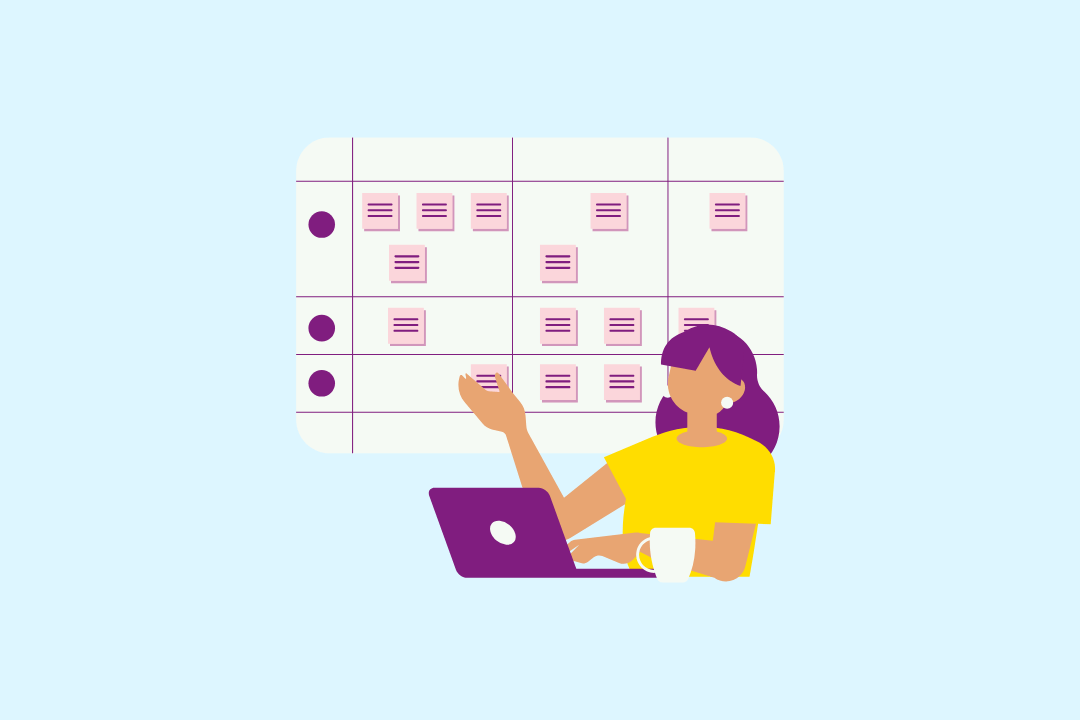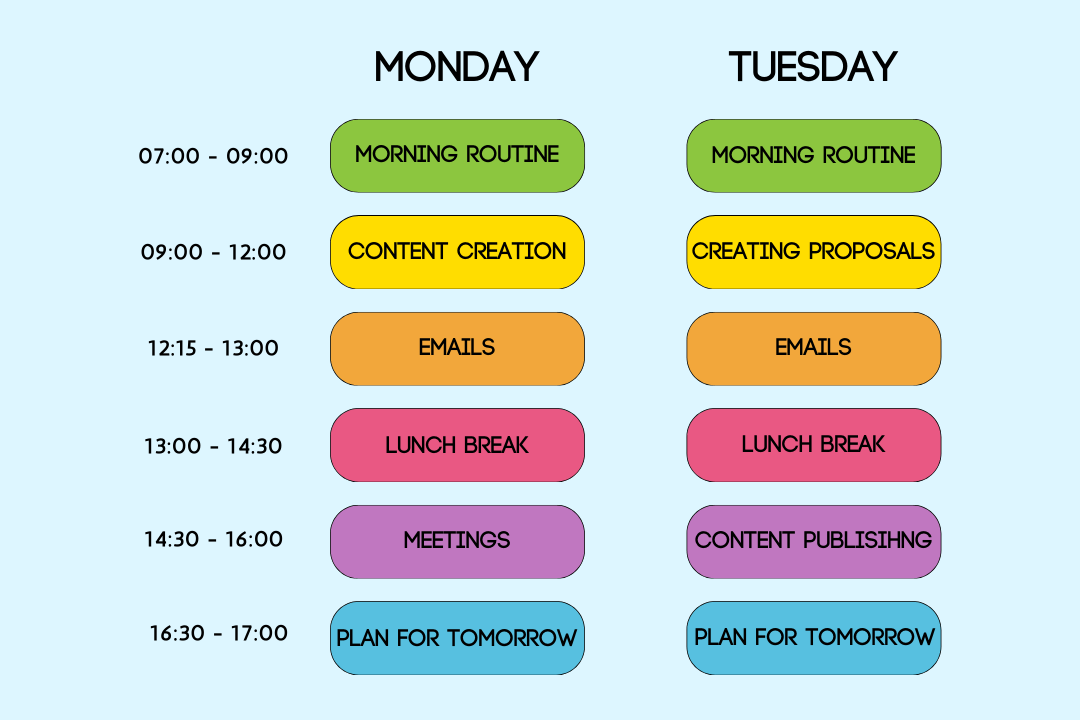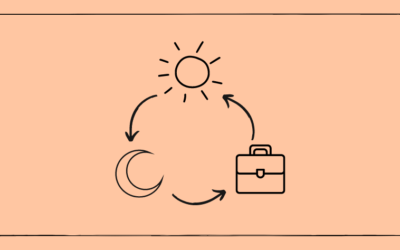Here’s Why You Should Start Time Blocking
Workplaces today are more demanding than ever. You’re not alone if you constantly push beyond 5 pm to meet deadlines.
For most of us, our workdays are filled with unproductive meetings, emails, calls, good old friendly chats, and distractions in the office.
Starting time blocking can take the constant pressure off you and give you some breathing space allowing you to work more mindfully while achieving better results.
What is Time Blocking?
Time Blocking means creating specific time blocks and assigning them to different tasks. It is one of the most effective time management skills you should learn and utilize.
Every block of time you create and dedicate to a specific task ensures that you’re only focused on one task at a time and can eliminate distractions.
Time blocking allows you to give your full energy to the task at hand which usually translates into better quality work done time efficiently.

How to Time Block Effectively
Below are some helpful tips when planning your day using time blocks. While every person has different goals and work schedules, following the below guidelines can help you create a custom daily work plan to take you closer to your goals.
1. Prioritize tasks by importance
Productivity is achieved not by doing more work. But by doing the important tasks. Identifying and prioritizing the most important tasks is key to efficiency and productivity.
Blocking time for such tasks in the morning when your mind is well-rested and fresh will allow you to give those tasks your best efforts.
List your next day’s tasks by importance and urgency and keep the rest towards the later part of the day. For example, a client proposal that is likely to bring revenue to the company should be worked on earlier in the day. A participation form or email that is not urgent can be attended to after lunch.
2. Scheduling and timing your time blocks
The next step should be to schedule your time blocks on a calendar or any other app that you use daily. Todoist and Asana are great tools that allow you to do this easily.
Each time block should have a start and end time where you dedicate that full-time slot for the allocated task.
3. Add time blocks for procrastination
Even the most productive people amongst us get distracted. Instead of getting distracted in the middle of a dedicated time block, schedule a short break for procrastination between time blocks.
Use this time to do whatever you feel like. Scroll through social media, browse the internet for random thoughts you get, or anything else you want to do at that time.
4. Commit to your time blocks
Once the time blocks are created and the day is planned, commit to them without any excuses. The only reason you should change them is if some unplanned last-minute urgency comes up or in case of an emergency.
Anything else can wait. By making this process a habit, you’ll start getting used to strictly following your time blocks and getting the most important things done daily.
5. Create your time block schedule in advance
Dedicate the last 15 or 20 minutes of your work day to plan the next day. The last time block on your daily calendar should be planning the next day.
By creating your time block for tomorrow, you come back to work the next day mentally prepared to tackle all the tasks and don’t have to waste any energy planning your day.

What are the different Time Blocking Methods?
Now let’s look at some of the most common time blocking methods you can use to make the most out of this amazing time management strategy.
1. Task Batching
Task batching is the process of batching several similar tasks to fit into one block of time that you set. By batching tasks of a similar nature, you avoid switching between different tasks within that time block.
A good example of task batching would be to put in research, writing, and editing into the time block you have created for content creation.
2. Day Theming
Day theming is a more advanced method of time blocking. This is when you dedicate each day of the week to a selected theme or type of work.
For example, Mondays to write, Tuesdays to create graphics, Wednesdays to post, Thursdays for administrative tasks, and so on.
3. Time Boxing
Time boxing is quite similar to task batching. Time boxing is to set a certain amount of time to do a very specific task and dedicate your time blocks to very specific and individual tasks.
For example, 30 minutes to read, 01 hour to reply to emails, 01 hour to research, etc.
What does time blocking look like?

How Time Blocking can boost Productivity
Time blocking takes a lot of wasted energy out of your workday saving a lot more time than it may seem. Having to think and figure out what to do next after you complete each task can take up a lot of time and energy that could be spent much better.
Below are 5 ways time blocking can help you increase productivity and get better results.
1. Higher levels of focus
By setting clear tasks for each block of time, you don’t have to think of anything else and can dedicate the allocated time block fully towards the set task.
This will help you achieve higher levels of focus resulting in a better quality of work.
2. Enables to achieve the flow state
Have you ever noticed that sometimes you are in such a state of flow that you find it so much easier to do uninterrupted work, ideas seem to be flowing to you more effortlessly and you can achieve much better results.
Creating and committing to time blocks can help you achieve this flow state more due to higher focus, clarity of mind, and better management of energy, and time.
3. Clarity of Goals
By constantly creating a calendar with time blocks of the important tasks you need to work on, you start seeing the bigger picture and can visualize your overall goals much more clearly.
When there is clarity of your goals, it becomes much easier to plan and execute your workday more successfully.
4. Saves your energy
Time spent deciding what you need to do in between every task takes up a lot of energy. We all know we have limited energy every day.
By having a solid daily plan dedicated to specific tasks, you can save the hassle of planning when you should be working on your actual goals.
5. Better time management
With the amount of daily tasks most of us need to do, I think we can all agree that we feel there isn’t enough time in a day. If we could eliminate planning every hour for the next hour and do it once per day, we could free up a lot of time.
Time blocking is a great strategy to achieve better time management and be on top of the list of the things you need to do.
Key Takeaway
While I don’t disagree with the fact we have so much to do and so little time, I strongly believe that we can always learn smarter ways to utilize the limited time we get every day.
From my humble experience and 10+ years of working life, time blocking has been the most reliable time management strategy that has enabled me to climb the corporate ladder, work on my personal goals, and find work-life balance.
If you’re still not convinced, try it for a week and let us know how it went for you in the comments below.












0 Comments